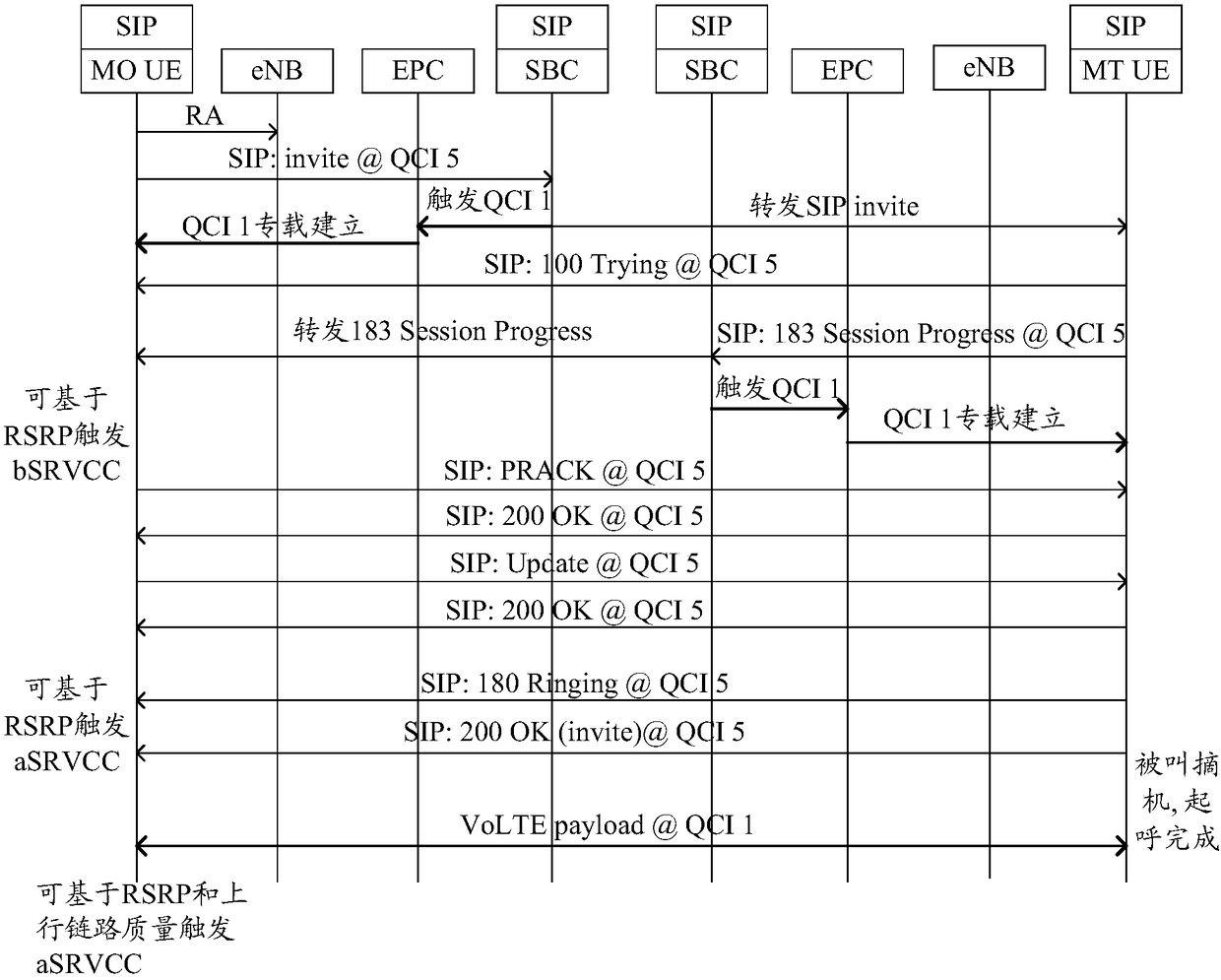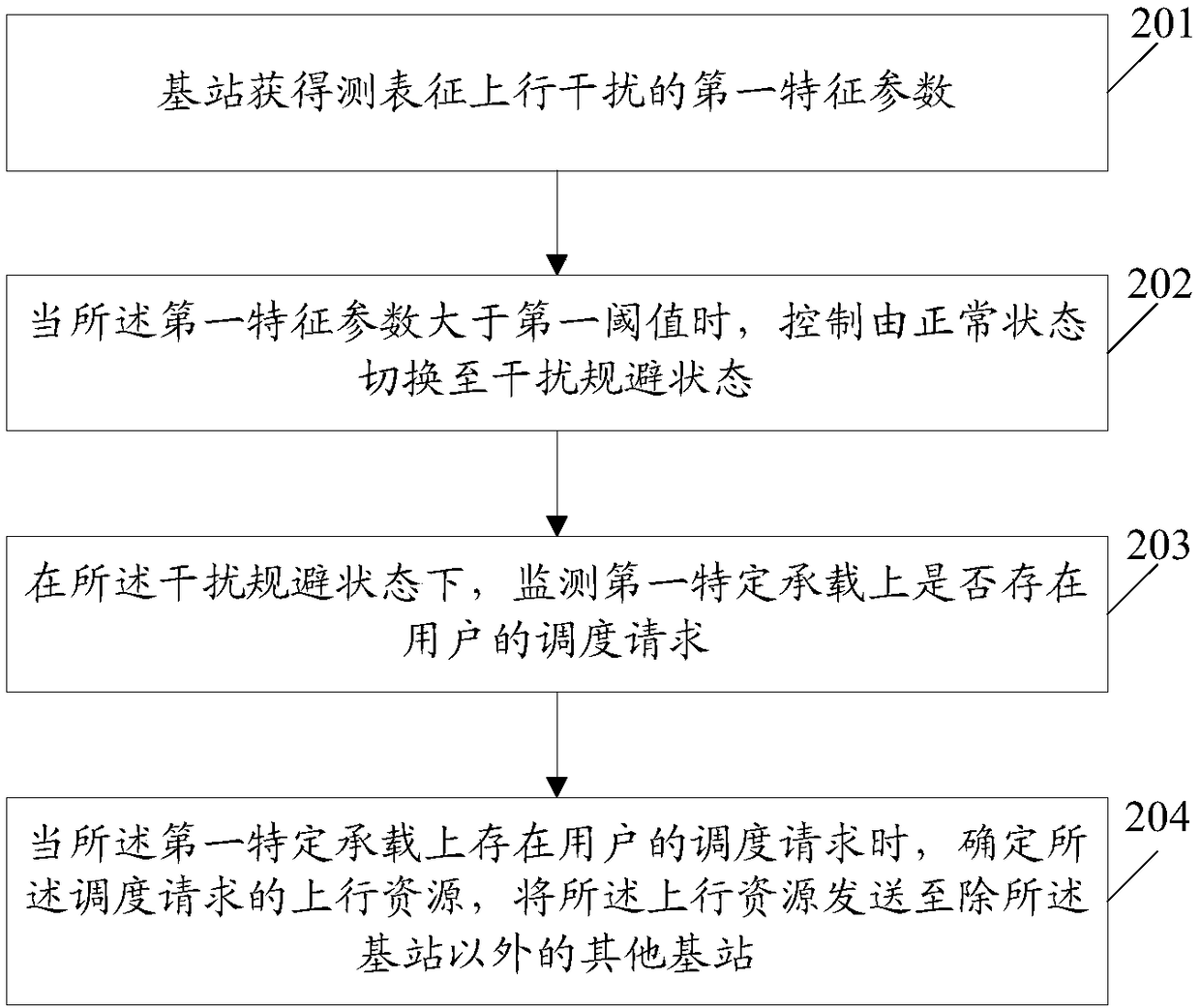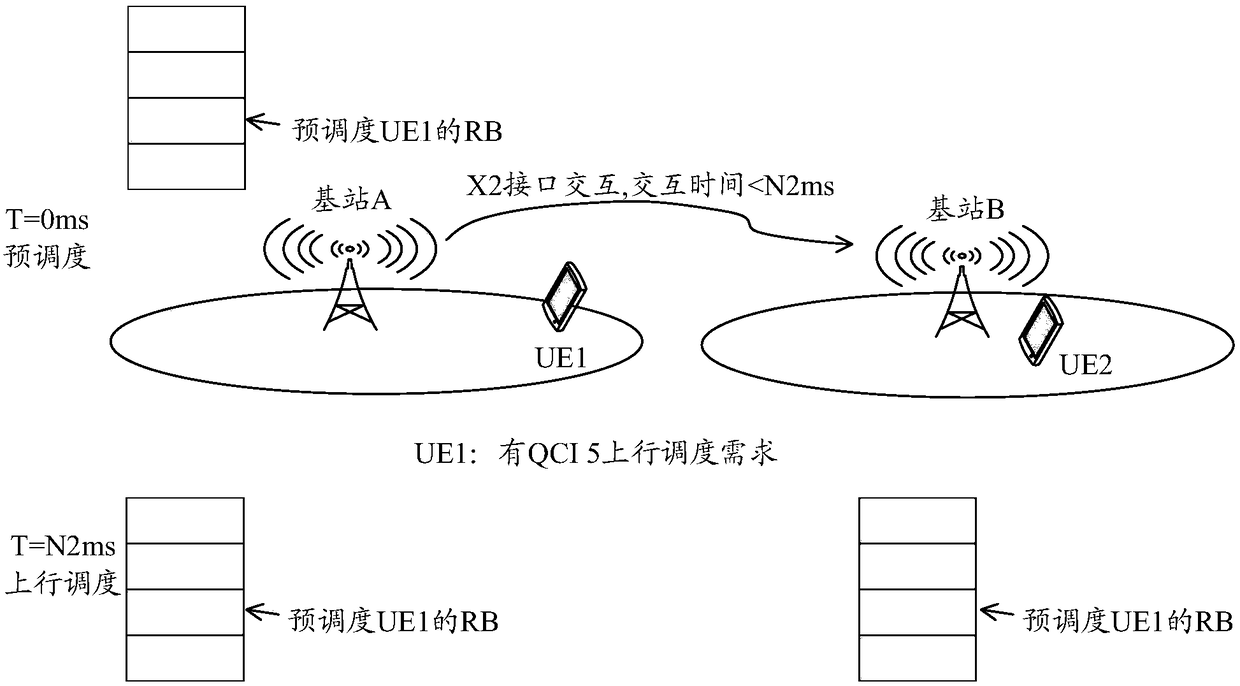Scheduling method and base station
A scheduling method and base station technology, applied in electrical components, wireless communication and other directions, can solve the problems of reducing the VoLTE terminal call rate and time extension, and achieve the effect of improving the VoLTE call success rate and reducing the VoLTE call delay.
- Summary
- Abstract
- Description
- Claims
- Application Information
AI Technical Summary
Problems solved by technology
Method used
Image
Examples
Embodiment 1
[0040] An embodiment of the present invention provides a scheduling method. figure 2 It is a schematic flow chart of the scheduling method of the embodiment of the present invention; as figure 2 As shown, the method includes:
[0041] Step 201: the base station obtains a first characteristic parameter representing uplink interference.
[0042]Step 202: When the first characteristic parameter is greater than the first threshold, the control is switched from the normal state to the interference avoidance state.
[0043] Step 203: In the interference avoidance state, monitor whether there is a scheduling request of the user on the first specific bearer.
[0044] Step 204: When there is a scheduling request of the user on the first specific bearer, determine the uplink resources of the scheduling request, and send the uplink resources to other base stations except the base station, so that the other base stations avoid Use the uplink resource.
[0045] In this embodiment, th...
Embodiment approach
[0049] As an implementation manner, the method further includes: when there is no scheduling request of the user on the first specific bearer, not executing the uplink avoidance scheme and maintaining a normal state.
[0050] In this embodiment, when no data transmission of the user is detected on the second specific bearer, the uplink resources of the scheduling request are determined again, and the uplink resources are sent to other base stations except the base station, so as to causing the other base stations to avoid using the uplink resource; until it is detected that there is data transmission of the user on the second specific bearer. Wherein, the second specific bearer is a bearer that does not need to be enhanced. The second specific bearer may be, for example, a QCI 1 bearer.
[0051] Specifically, when the base station monitors the data transmission of the user (the user is specifically the user scheduled on the first specific bearer) on the QCI 1 bearer, it indic...
Embodiment 2
[0062] The embodiment of the present invention also provides a base station. Figure 5 It is a schematic diagram of the composition and structure of the base station of the embodiment of the present invention; Figure 5 As shown, the base station includes: an acquisition unit 41, a control unit 42, a monitoring unit 43 and a communication unit 44; wherein,
[0063] The obtaining unit 41 is configured to obtain a first characteristic parameter representing uplink interference;
[0064] The control unit 42 is configured to switch from the normal state to the interference avoidance state when the first characteristic parameter obtained by the acquisition unit 41 is greater than a first threshold;
[0065] The monitoring unit 43 is configured to monitor whether there is a scheduling request of the user on the first specific bearer in the interference avoidance state; when there is a scheduling request of the user on the first specific bearer, determine the scheduling request of t...
PUM
 Login to View More
Login to View More Abstract
Description
Claims
Application Information
 Login to View More
Login to View More - R&D
- Intellectual Property
- Life Sciences
- Materials
- Tech Scout
- Unparalleled Data Quality
- Higher Quality Content
- 60% Fewer Hallucinations
Browse by: Latest US Patents, China's latest patents, Technical Efficacy Thesaurus, Application Domain, Technology Topic, Popular Technical Reports.
© 2025 PatSnap. All rights reserved.Legal|Privacy policy|Modern Slavery Act Transparency Statement|Sitemap|About US| Contact US: help@patsnap.com



